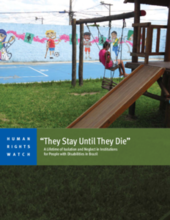Displaying 261 - 270 of 744
The current study from the Infant Mental Health Journal addressed whether two institution‐wide interventions in St. Petersburg, Russian Federation, that increased caregiver sensitivity (Training Only: TO) or both caregiver sensitivity and consistency (Training plus Structural Changes: T+SC) promoted better socioemotional and cognitive development than did a No Intervention (NoI) institution during the first year of life for children who were placed soon after birth.
The purpose of this study was to establish the prevalence of symptoms of anxiety disorder, depression and post-traumatic stress disorder (PTSD) among adolescents with a history of abuse and neglect living in charitable children’s institutions (CCIs) in Nairobi County, Kenya.
This paper seeks to contribute to debates about how people's adult lives unfold after experiencing childhood adversity. It presents analysis from the British Chinese Adoption Study: a mixed methods follow-up study of women, now aged in their 40s and early 50s, who spent their infant lives in Hong Kong orphanages and were then adopted by families in the UK in the 1960s.
This paper explores what happens to children separated from their families at the U.S. border with Mexico by examining the nature of the services and programs provided while they are in temporary foster care.
This report documents a range of abuses against children and adults with disabilities in residential institutions in Brazil.
The aim of the systematic review described in this article was to determine the outcomes for individuals exposed to severe neglect in congregate care institutions such as orphanages.
This study from the Bucharest Early Intervention Project (BEIP) examines the brain electrical activity of children and young people who have been institutionalized.
The objectives of the study were to describe and study the extent of depression in adolescent boys and girls living in institutional homes and to study the association between depression and externalizing and Internalizing behaviors among adolescents in institutional homes.
The study consisted of a comparative follow-up study with a pretest-posttest design which explored the association between baseline child, family, and care characteristics and the psychosocial development of 121 schoolaged Dutch children during their first year of placement in foster care (FC), family-style group care (FGC), and residential care (RC).
This talk, given by Dr Charles Nelson, focuses on two strands of work that reflect very different types of adversity: (1) the effects of early, profound psychosocial deprivation (including a review of the most recent findings from the Bucharest Early Intervention Project, a randomized controlled trial of foster care as an intervention for early institutionalization in Romania) and (2) the effects of growing up in a low resource urban center where children are exposed to a large number of both biological (e.g., malnutrition) and psychosocial (maltreatment) stressors (including a review of recent findings from a large study taking place in Dhaka, Bangladesh).


